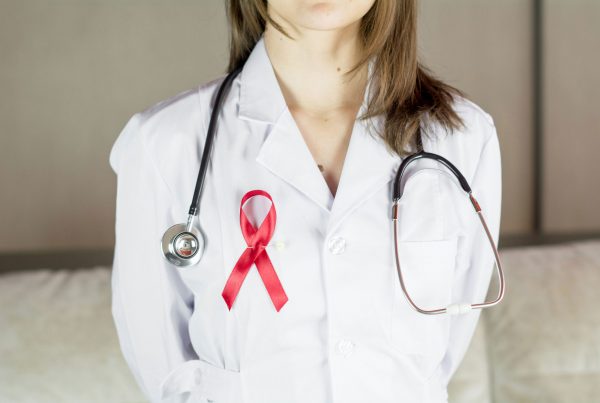From Piaget’s to Erikson’s, respected psychological theories of development describe a similar theme when outlining adolescence. It is a time in a person’s life when they begin understanding abstract logic and first dabble in contextualizing their life; cracks in parental or cultural conditioning begin to emerge, and elements of individuality begin to take their place at the forefront of a person’s personality. Now, while these academic descriptions of adolescence are quite lofty, the grand premise is much simpler: Adolescent years bridge a person’s childhood and adulthood, and are therefore characterized by challenges associated with defining one’s sense of self and their role in the greater world they are gradually entering independently.
When we consider the overwhelming challenges teenagers face – mentally, physically, and socially – more frequent mood swings seem all the more understandable. However, because teenage years are often some of the most intensely emotional years, emotional exhaustion places adolescents at a greater risk of developing clinically-significant mental health problems, like depression and anxiety. It can be incredibly difficult to discern “teenage angst” from depression, which is why it is so important to remain vigilant and proactive about depression in the teenagers in your life. In this article we’ll explore depression, how it typically presents in teens, and finding appropriate mental health care for them.
What is depression?
Depression is most often clinically referred to as Major Depressive Disorder (MDD) or Persistent Depressive Disorder (PDD), formerly dysthymia (DSM-4). These mood disorders are characterized by persistent feelings of sadness, hopelessness, guilt, and/or apathy, and often result in moderate to severe impairment. Depression manifests itself emotionally, cognitively, physically, and behaviorally. Cognitively, a person with depression may struggle with concentrating, making good decisions, and overall executive functioning. Physically, depression oftens presents itself as disturbed sleep, changes in appetite, and fatigue. Behaviorally, those with depression may also exhibit social withdrawal, increased agitation, and may even engage in self-destructive behavior such as substance abuse and suicide attempt. For several with depression, the multitude of symptoms they experience, and their severity, result in noticeable problems with day-to-day functioning and maintaining relationships in their lives.
PDD is a less intense, but longer-lasting form of depression. Clinically, it is distinguished by consistent depressive symptoms – lasting at least two years but often much longer – unlike episodes of MDD which tend to recede in 6-12 months. Although PDD is regarded as less severe than MDD, its chronic nature still enables it to significantly impair an individual’s quality of life over time. A person with PDD may not appear to struggle with day-to-day functioning like a person with MDD might, but persistently masking chronic feelings of apathy and hopelessness can result in problems with health or functioning down the line. Unfortunately, it can be even more difficult to recognize and help someone with PDD because they tend to behave in a manner that does not raise any cause for concern in those around them.
Depression in Teenagers
Prevalence
Before we cover how to recognize depression in adolescents, it is worth noting the immense importance of catching teenage depression as early as possible. It is common for depression to first affect a person during their adolescent years, and research has shown that childhood and adolescent depression is a significant predictor for depression in adulthood as well as its severity. Additionally, figures like the ones below note the rapidly increasing prevalence of depression and suicidal tendencies in adolescents and demonstrated the great need to remain watchful of depression in all teens.
- The total number of adolescents 12-17 who experienced depression increased 59% from 2007-2017. The rate of growth was higher in females than in males.
- More than 4 million (about 17%) of American adolescents 12-17 experienced at least one major depressive episode in 2020.
- The prevalence of depression was significantly higher in females (25.2%) than in males (9.2%).
- The prevalence of depression was highest among adolescents reporting two or more races (29.9%).
- The national suicide rate increased nearly 60% from 2007 to 2018 for those ages 10-24.
- Although prevalence of depression is higher in adolescent girls, adolescent boys demonstrate higher rates of suicidal ideation and suicide.
- In 2018, suicide was the second leading cause of death in those ages 10-24.
- The CDC’s 2019 Youth Behavioral Risk Factor Surveillance System showed that 18.8% of high school students seriously considered attempting suicide and 8.9% actually attempted suicide.
- Nearly 3 million adolescents reported experiencing severe impairment due to a major depressive episode in 2020.
- Less than half of adolescents (41.6%) who experienced a major depressive episode, with or without severe impairment, received treatment in 2020.
- According to a study published in the American Journal of Psychiatry, 75% of those who experience depression in adolescence later struggle with depression, other mood disorders, anxiety disorders, and/or substance use disorder as adults.
Recognizing It
Parents and caregivers do not need to worry about every mood swing a teenager displays, but paying close attention to details like intensity and duration of potential depressive symptoms can prevent a teen’s prolonged suffering. Below are just a few of the signs and symptoms of teenage depression. This, of course, is not an exhaustive list of signs, so it is best practice to note any significant changes in your teen’s behavior.
- Depressed mood
- Lowered self-esteem
- Feelings of worthlessness and hopelessness
- Lower energy levels
- Frequent irritability and anger
- Loss of interest in activities and/or anhedonia
- Disturbed sleep
- Appetite and weight fluctuations (increase or decrease)
- Decreased maintenance of personal hygiene
- Socially withdrawing or distancing
- Behavioral problems at school
- Suicidal tendencies (i.e. speaking of death more often)
There is significant overlap between what is assumed to be typical teenage moodiness and signs of actual depression. In addition to remaining aware of these changes, it can be helpful to use information on the intensity of symptoms, duration of symptoms, and the areas in which they are present, to better discern between teenage angst and depression.
- Intensity: Gauge how much a teen’s academic, relational (friend and family), and/or daily functioning is impaired by the symptoms they are displaying
- Duration: Mood swings that are not related to depression tend to end as quickly as they began. Take note if the symptoms are chronic or inconsistent, as well as how long they last when they do arise.
- Areas: It’s typical teenage behavior to demonstrate defiance and moodiness at home, especially towards parents. However, if a teen is experiencing recurrent problems in other domains like at school or with friends, this may be a sign of the greater internal turmoil associated with depression.
If you are unsure if it is teenage angst or depression, it is better to err on the side of caution. Unlike teenage angst, depression is a potentially life-threatening disease and its symptoms must be taken seriously from the start. In the next section, we will discuss what can be done for a teen who is potentially experiencing depression.
Diagnosis & Treatment
Regardless of age, depression denotes suffering. It is important to look out for depression in people of all ages, but being especially vigilant of depressive symptoms in the teens can help them avoid a lifetime of recurrent – and often, more intense – depression, as well as its associated health concerns. Depression is treatable, and watching out for struggling teens can save lives.
You may choose to first consult with a primary healthcare provider who can begin by ruling out other conditions that could be causing a teen’s mood disturbances. Illnesses like anemia, hypo- or hyperthyroidism, diabetes, mononucleosis, and vitamin D deficiency are known to cause symptoms of depression. If no other alternative health concern is identified, a healthcare provider may refer you to a mental health professional for a more detailed evaluation.
Mental health professionals use the Diagnostic and Statistical Manual of Mental Disorders (5th edition) to assess and diagnose depression. The diagnostic criteria for Major Depressive Disorder (MDD) is:
- Presence of five or more depressive symptoms during the same two week period that are a change from previous functioning; depressed mood and/or loss of interest/please must be present
- Depressed mood (may be irritable mood in children and adolescents) most of the day, nearly every day; may be subjective or observed by others
- Markedly diminished interest/pleasure in all (or almost all) activities
- Significant weight loss or gain, or decrease or increase in appetite
- Insomnia or hypersomnia
- Psychomotor agitation or retardation
- Fatigue or loss of energy
- Feeling worthless or excessive/inappropriate guilt
- Decreased concentration
- Thoughts of death/suicide
- Additional required criteria: must have all 4
- Symptoms cause clinically significant distress or impairment in social, occupational, or other important areas of functioning
- Episode not attributable to physiological effects of a substance or another medical condition
- Episode not better explained by another psychiatric disorder
- No history of manic or hypomanic episode
The two most common forms of treatment for depression are psychotherapy and medication, which are also often used simultaneously. Cognitive-Behavioral Therapy (CBT) is a form of psychotherapy that has been demonstrated to be effective for a range of mental health concerns, including depression, anxiety, eating disorders, substance abuse, and more. This form of psychotherapy involves changing thinking and behavioral patterns that may be contributing to a person’s suffering. CBT teaches people better ways of coping with discomfort and provides a neutral space for them to practice utilizing them. Common CBT strategies include learning to recognize when one is catastrophizing reality, learning to develop a greater sense of confidence, and facing one’s fears instead of avoiding them.
Pharmacological treatment of depression involves the use of antidepressants, most commonly selective serotonin reuptake inhibitors (SSRIs). Serotonin is a brain chemical associated with feelings of joy, satisfaction, and well-being. SSRIs serve to increase the levels of serotonin in the brain. In addition to faster effects, medication often augments the success of psychotherapy by placing a person in a mindset that is more receptive to its benefits.







